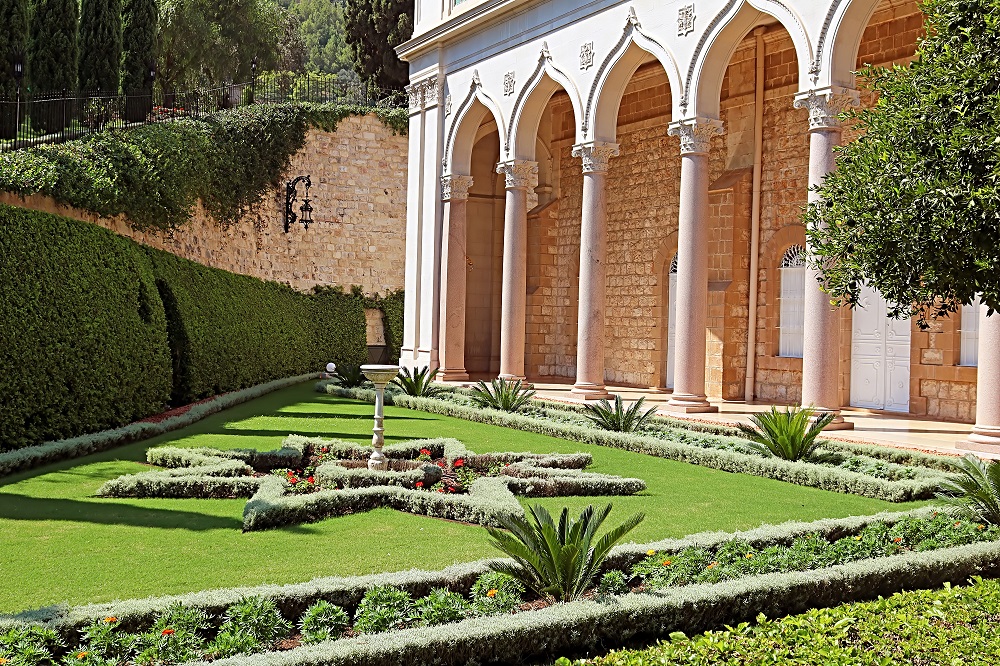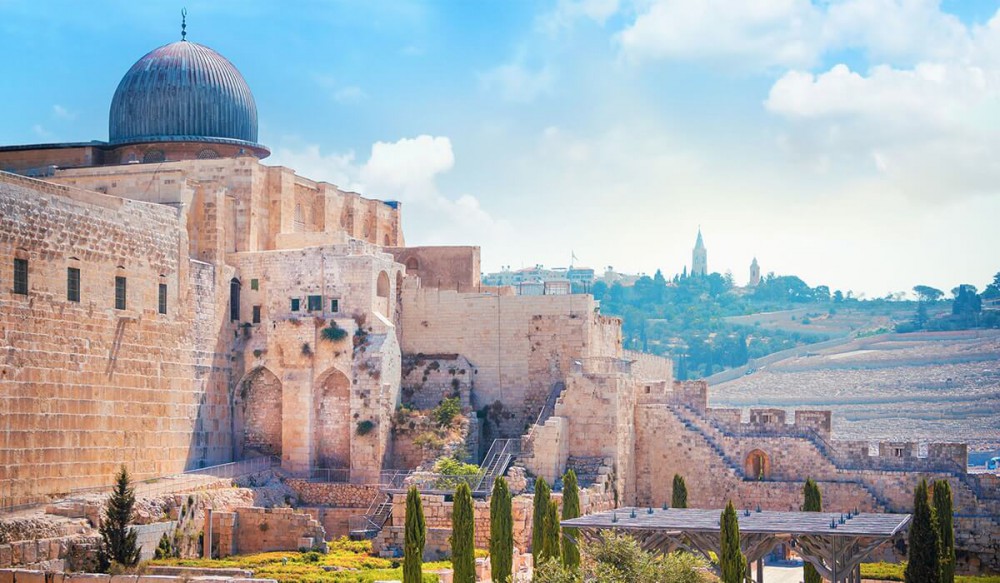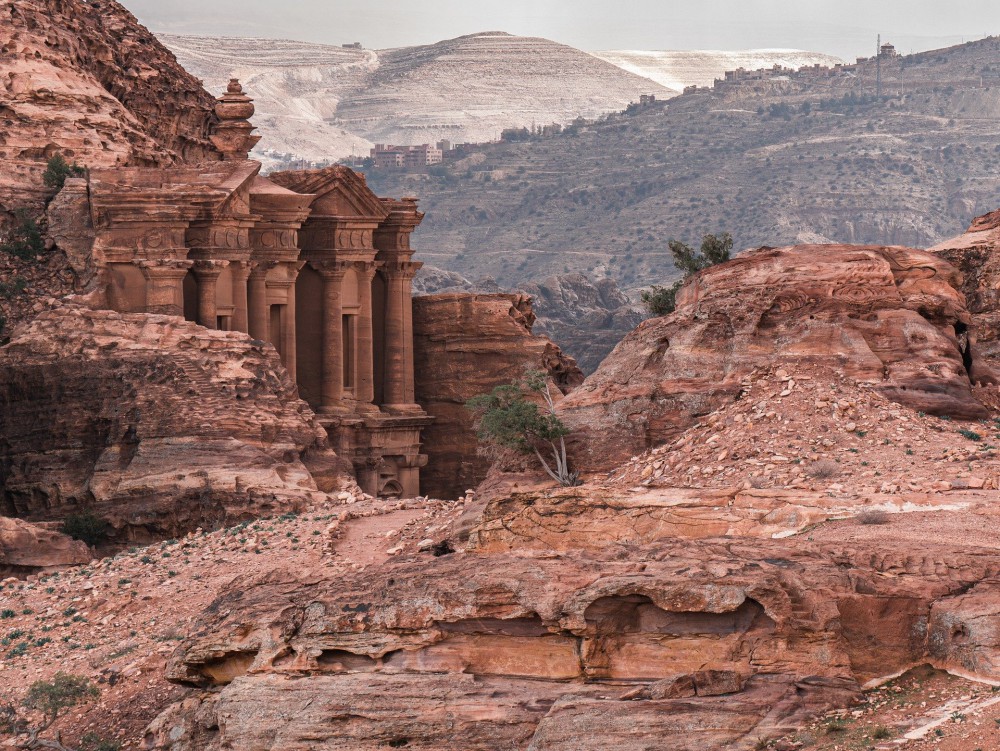





(The tour will be operated with a max of 34 participants)
Beginning every Friday, this 12-night program offers the traveller an intensive tour of some of Israel’s most classic sites. The tour features 2 nights in Tel Aviv, 2 nights in Galilee and 5 nights in Jerusalem. The tour continues to the Hashemite Kingdom of Jordan where 1 night will be spent in Amman, 1 night in Petra and then the last night in Tel Aviv after crossing back into Israel.
The land rates include the following services:
– Sharing transfer on arrival and departure (from/to Ben Gurion Airport)
– Assistance at the airport upon arrival
– Transfer to and from the Jordan border
– 12 nights accommodation on BED & BREAKFAST basis except for Kibbutz Lavi and Jordan on HALF BOARD basis
(Due to availability, the second night in Jordan might take place in Amman instead of Petra)
– 9 touring days as per itinerary, with English speaking guide
– Entrance fees to the sites visited as per itinerary
~ Rates do NOT include entry Visa to Jordan, border taxes & border shuttle transfers Israel-Jordan, cost of Dead Sea treatments and mud not included.
Your land arrangements do not include:
Airfare to and from Tel Aviv
Departure taxes, fuel surcharges or airport improvement fees
Porterage at the airport or hotels
Insurance
Early check-in/late check out
Single room supplement – a limited number of single rooms available on payment of supplement
Optional tours not mentioned
Meals and beverages not indicated
Gratuities for individual services, laundry and valet service and any other items of a purely personal
nature
Jordanian visa charge/border taxes of approx. $130.00 US per person to be paid locally
Horseback ride in Petra
Tipping to guide, driver, hotel or restaurant staff, horse handler in Petra
E. & O.E.
Friday – Day 1 Ben Gurion Airport / Tel Aviv
After an overnight flight arrive at Ben Gurion Airport you will be met and assisted by our representative then transferred to your hotel. Overnight in Tel Aviv.
Saturday – Day 2 Tel Aviv
Day at leisure. A good day to do some exploring on your own. Overnight in Tel Aviv. B
Sunday – Day 3 Caesarea / Megiddo / Haifa / Galilee
Leaving Tel Aviv we drive along the coastal plain to Caesarea, once the Roman capital of the region where we will see the excavations of the Crusader-era city, the Roman port, the aqueduct and the amphitheater that has been restored to its former glory as a concert venue. From here we proceed to Megiddo identified as the site of the Armageddon. During our visit see the archaeological excavations including the well-preserved water supply system. Moving on journey through the Druze villages via Mount Carmel to the port city of Haifa for a panoramic view of Haifa Bay and the Golden domed Baha’i Shrine with its perfectly manicured 19 terraced Persian Gardens. Continue to the upper Galilee for overnight. Overnight in a Kibbutz guesthouse. B/D
Monday – Day 4 Safed / Katzrin / Golan Winery / Galilee
Our day begins with a drive to Safed, the center of Jewish mysticism situated in the dense pine forest of the Upper Galilee overlooking the Sea of Galilee and Tiberias. Visit the ancient synagogues and its thriving Artists’ colony where you can observe local artists at work creating their masterpieces. Continue to the strategic Golan Heights to see the former Syrian bunkers in Quneitra and the new Israeli Talmudic village of Katzrin, an open-air museum located in the Golan Heights. Stop at the Golan Winery for a tour and wine tasting. B/D
Tuesday – Day 5 Sea of Galilee / Nazareth / Beit Alpha / Jerusalem
We start the day with a visit to Nazareth, the boyhood home of Jesus visiting the Church of Annunciation built over the remains of the Virgin Mary’s home. According to tradition, it was here that the Angel Gabriel appeared to Mary and told her of the impending birth of Jesus. Moving on we come to Tiberias situated on the western shore of the Sea of Galilee and named after the second emperor of the Roman Emperor Tiberias. Considered one of the four Holy Cities in Judaism, the Tomb of Maimonides is one of the most important Jewish pilgrimage sites in Israel. A short drive takes us to the fishing village of Capernaum sitting on the north shore of the Sea of Galilee to observe the ruins of the synagogue and the octagonal Church of St. Peter said to be built on the site of Saint Peter’s House. Our next stop will be at the Mount of Beatitudes where Jesus delivered the moving Sermon on the Mount. Driving via Beit She’an once known as Scythopolis located at the junction of the Jordan River Valley and the Jezreel Valley, we come to Beit Alpha where the remains of a mosaic floor in an ancient synagogue depicts the zodiac with Hebrew labels. A 2-hour drive takes us to the Holy city of Jerusalem. Overnight in Jerusalem. B
Wednesday – Day 6 Mt. of Olives / Old City / Bethlehem*
Immerse yourself this morning in the magnificent panoramic view from the Mount of Olives, the site where many Biblical events took place including where Jesus stood when he wept over Jerusalem. Afterwards, we drive to the Old City of Jerusalem to the Tomb of King David located on Mount Zion in the former Hagia Sion Temple in a corner of the room and is covered with an embroidered velvet drape. This is one of the most sacred places for the Jews. NOTE: Men and women enter the tomb separately. To enter the tomb one must dress modestly with a head covering. On the second floor is the Cenacle or Room of the Last Supper where Jesus’ shared His last supper with His Apostles. Afterwards, enter the walled city and walk through the newly restored Jewish Quarter, of the four quarters of the Old City. Visit the Roman Cardo, the main street of Jerusalem some 1500 years ago. This exceptionally wide colonnaded street was comprised of a central lane for the passage of carriages and animals and was flanked on each side by colonnaded covered walkways for pedestrians. Excavations have revealed covered stalls and workshops. Moving on we come to the Herodian Quarter, an area of archaeological excavations in the Jewish Quarter of the Old City. Wealthy people of the 1st century CE in Jewish Jerusalem once lived here. Digs dating from the 1970s revealed villas of colossal dimensions rich in artifacts. We are now on our way to the Western Wall also known as the Kotel**** or Wailing Wall built by Herod the Great as a place of prayer where thousands of people come to pray. It is also a sacred pilgrimage site for the Jewish people. Written prayers to God are placed in the crevices of the ancient wall. We now walk along the Via Dolorosa, the Way of Grief, the path along which Jesus walked to His crucifixion which is lined by Eight Stations of the Cross. Standing in the Christian Quarter of the Old City we arrive at the Church of the Holy Sepulchre. The last Five Stations are located in or near the Church of the Holy Sepulchre. According to beliefs, the Church of the Holy Sepulchre contains two of the most sacred sites in Christianity where Jesus was crucified and where Jesus was believed to have been buried and resurrected.
Afterwards, we depart for Bethlehem* located some six miles southwest of Jerusalem, it was here that Jesus was born. Situated at the northern entrance of Bethlehem we find Rachel’s Tomb, the revered burial place of the Hebrew matriarch Rachel considered sacred to Jews, Christians and Muslims alike. The tomb is covered with a velvet drape. From here we proceed to the Church of the Nativity. The Grotto is the oldest continuously used place of worship in Christianity and the Basilica, the oldest church in the Holy Land. The only entranceway was lowered to deter looters from driving inside with their carts. In the center of the city is Manger Square named after the manger where Jesus was born. Overnight in Jerusalem. B
Thursday – Day 7 Israel Museum / Mt. Herzl / Yad Vashem
Our day begins with a drive to Givat Ram where on a hill adjacent to the Biblelands Museum we find the Israel Museum ranked as one of the world’s best art and archaeological museums. Built as a repository for the first seven Dead Sea scrolls discovered in 1947 at Qumran, the white dome embodying the lids of the jars in which the first scrolls were found. Adjacent to this is the amazing Miniature Model of the Second Temple prior to its destruction in 66 CE by the Romans. Moving on we come to the Knesset, Israel’s Parliament. At the edge of the Rose Garden opposite the Knesset is the Bronze Menorah some 4.30 meters high designed by Benno Elkan, a Jewish sculptor originally from Germany who presented the Menorah to the Knesset as a gift from the Parliament of the United Kingdom. We now come to Mount Herzl Cemetery, Israel’s main cemetery for the leaders of the country and people who sacrificed their lives for Israel.
Not far away is Yad Vashem, Israel’s official memorial to the victims of the Holocaust located on the western slope of Mount Herzl, also known as the Mount of Remembrance. At the sprawling complex, you will find the Holocaust History Museum, the largest of its kind in the world depicting the story of the Holocaust from a Jewish perspective featuring individual stories. Next is the poignant Children’s Memorial hollowed out from an underground cavern which pays tribute to the 1.5 million Jewish children who perished in the Holocaust. The names, their ages and countries of origin are recited in the background. The Avenue of the Righteous Among the Nations is lined with some 2,000 trees in honour of their unwavering courage. Adjacent plaques record the names of those honoured and their country of residence. In the Exhibitions Pavilion is the new Flashes of Memory Photography during the Holocaust which presents an accounting of photographs and films created by Jewish and German photographers and members of the Allied forces during liberation. The Museum of Holocaust Art exhibits the largest collection of art created during the Holocaust in the ghettos, the camps and other places of hiding. The Synagogue serves as a memorial to the destroyed places of worship and is a testimony to the indestructible faith of European Jewry. The Valley of the Communities records the names of 5000 communities that existed for hundreds of years. Today, in many cases, nothing remains, but the name. A cattle car pays tribute to the millions of Jews herded onto cattle cars from all over Europe. Stop at the Hall of Remembrance, the first memorial established on the Mount of Remembrance. The mosaic floor records the names of the most infamous Nazi murder sites throughout Europe. The focal point being the Eternal Flame that continuously illuminates the room.
Leaving Yad Vashem we drive to Nachlaot and walk through its narrow alleys uncovering the rich tapestry of the city’s past. B/D
Friday Day 8 Qumran / Masada / Dead Sea
Leaving Jerusalem we drive through the Judaean Desert to the Dead Sea, the lowest point on earth almost 1300 feet (400 meters) below sea level. Stop at Qumran, an archaeological site dating back to the Iron Age where we find a series of caves. In 1947, Bedouins found the first of the Dead Sea scrolls in a cave just south of Qumran. Driving along the shores of the Dead Sea we come to the isolated mountaintop fortress of King Herod. It was here at Masada where the zealots made their last stand against the Romans before committing mass suicide in 73 AD. Ascend by cable car and view the remnants of the northern palace with several terraces and a courtyard surrounded by rows of columns. Archaeological digs uncovered a synagogue that is likely one of the oldest in the world. Near the remains of the synagogue are ruins of a Roman bathhouse with a changing room and separate rooms for warm, cold or hot baths. At the southern end is the Western Palace which includes a few preserved structures. At the end of your visit descend by cable car and continue to the Dead Sea. The therapeutic qualities exclusive to the Dead Sea** have been luring visitors for thousands of years. Cover yourself with the mineral-rich mud and experience floating in the Dead Sea. (Cost of treatments and mud not included)
Return to Jerusalem overnight. B
Some do’s and don’t’s at the Dead Sea
Saturday Day 9 Jerusalem
Today is Shabbat. The day is at leisure. Overnight in Jerusalem. B
Sunday Day 10 Jerusalem / Sheikh Hussein Bridge / Jerash / Amman***
Drive from Jerusalem to the Sheikh Hussein border crossing for procedures to enter Jordan. Proceed to Jerash, the city of the Decapolis located about 45 km. North of Amman in the fertile heights of the Gilad. Visit the ancient Roman city with colonnaded streets, the baths and the hill of the top Temple etc. Drive to Amman for a panoramic city tour of the Jordanian capital. Overnight in Amman. B
Monday Day 11 Amman / Petra
After an early breakfast, we leave the hotel and travel south on the road to Wadi Musa, the modern village of Petra. Ride on horseback to the “Siq” (canyon) and then continue on foot to Petra known as “Sela Edom” or red rock city, the ancient capital of the Nabateans from the 3rd century B.C. to the 2nd Century A.D. Visit the most interesting monuments such as the Treasury, El Khazneh (a tomb of a Nabataean king), then the field of tombs, obelisks, the altar (Al Madhbah) – from this point you can view the entire rock city. Afterwards, return to Wadi Musa village. Overnight in Petra. B
Tuesday Day 12 Petra or Amman / Madaba / Mt. Nebo / Tel Aviv
Breakfast at the hotel. Drive to Madaba to see the ancient mosaic map of the Holy Land and ruins of historical sites. Continue about 10 km. to Mount Nebo from where Moses viewed the Promised Land. From there you will see the Jordan Valley, Jericho and the Dead Sea, etc. Visit the remains of the Byzantine church with its mosaic floor. Drive to the border and after completing formalities continue to Tel Aviv. Overnight Tel Aviv. B
(Visa to Jordan, border taxes and border shuttle transfer Israel-Jordan not included)
Wednesday Day 13 Tel Aviv / Ben Gurion Airport
Breakfast at the hotel. Afterwards, transfer to the airport for your departure flight. B
The program sequence is subject to change without advance notice.